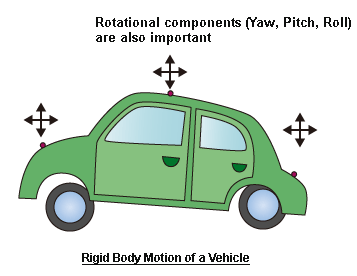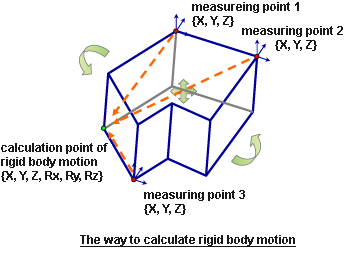Simulation of translational and rotational motion assuming the objective as a rigid body structure
Challenge: Identification of rotational motion which is hardly measured by physical test
In general, physical test can measure only translational motion but can’t measure rotational motion of a structure, which is hard to identify the motion of a structure precisely if rotational motion is involved.
This creates pains for the following occasions.
- Simulation for engine auxiliaries parts vibration and/or fatigue strength under running condition
- Understanding the drive shaft motion of a vehicle
- Banding performance prediction of printing machine

How to resolve pains:
In the above-mentioned cases, the prediction of rigid body motion of arbitrary points is available when the structure is assumed to be a rigid body.
ESTECH.Rmotion predicts 6 DOF rigid body motions (translational X 3, rotational X 3) with errors as small as possible.

Strength of the Software
- Elastic deformation of a structure is calculated by recomposing the motion of the measured points by processing predicted rigid body motion.
- Motion data are calculated at any points other than measurement points by extrapolation assuming the structure is a rigid body.。
- Application of least-square method yields highly accurate output with eliminating experimental error as much as possible
- Inertia properties are also predictable from the calculated rigid body motion by using ESTECH.[ I ]property
- The transfer function synthetic model is able to be developed when a connection plane is assumed to be a rigid.

